The Air-Cooled Porsche Will Never Die
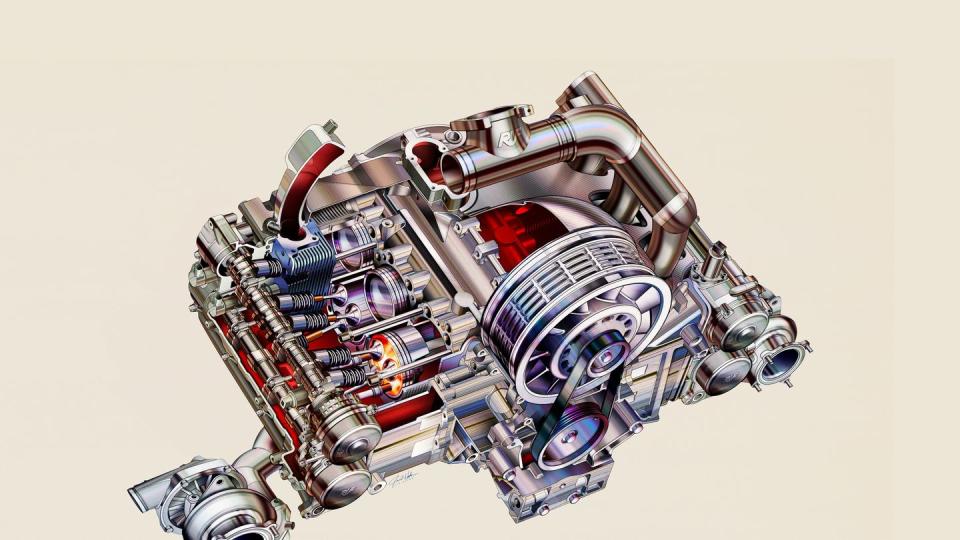

This story originally appeared in Volume 21 of Road & Track.
Porsche’s air-cooled flat-six still has life in it. To honor the 60th birthday of the 911’s engine, Ruf Automobile created the Tribute, a carbon-chassis car shaped like a 911. It sports, of course, an air-cooled flat-six out back. “We’re combining modern engine technology with the good old air-cooled,” Alois Ruf Jr. tells Road & Track. Ruf iterated on the classic Hans Mezger–designed air-cooled flat-six, enhancing that decades-old creation with 21st-century technology. This new Ruf engine displaces 3.6 liters and with twin turbochargers produces 543 hp and 553 lb-ft of torque. It also meets today’s emissions standards and promises the legendary durability of the air-cooled Porsche flat-six.
A
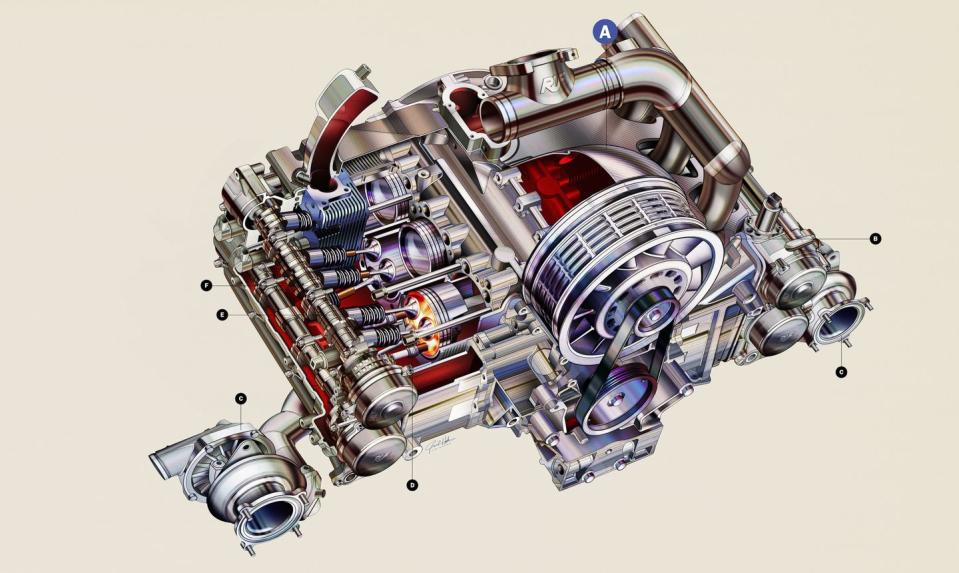
A shroud directs cooling air across and over the engine. While most old 911s had a fiberglass shroud, the Tribute engine uses a carbon-fiber piece. That’s natural for a car with a carbon monocoque.
B
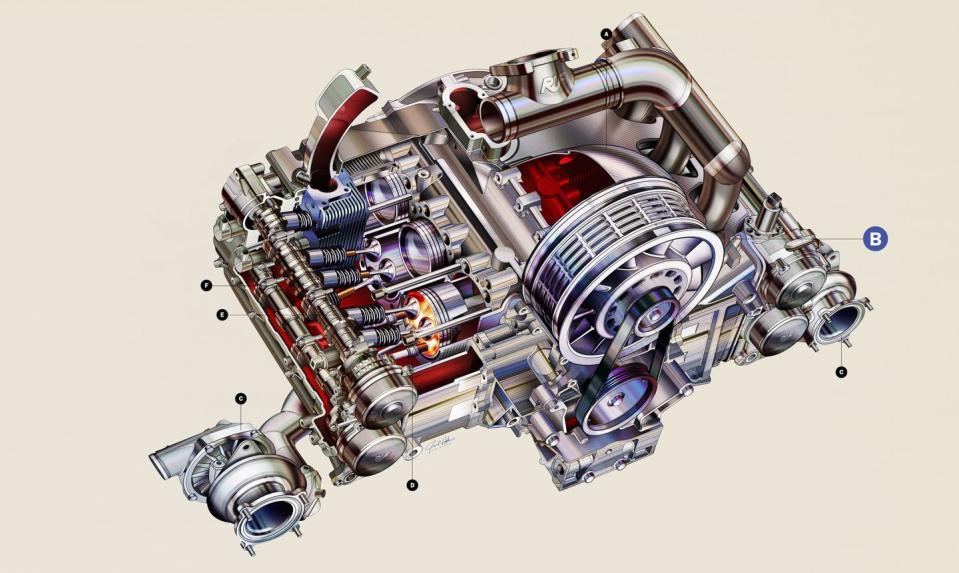
The defining element of any air-cooled Porsche engine is its belt-driven fan. Here Ruf uses the unit from the 993 Turbo of the mid-Nineties, the most efficient fan Porsche engineered.
C
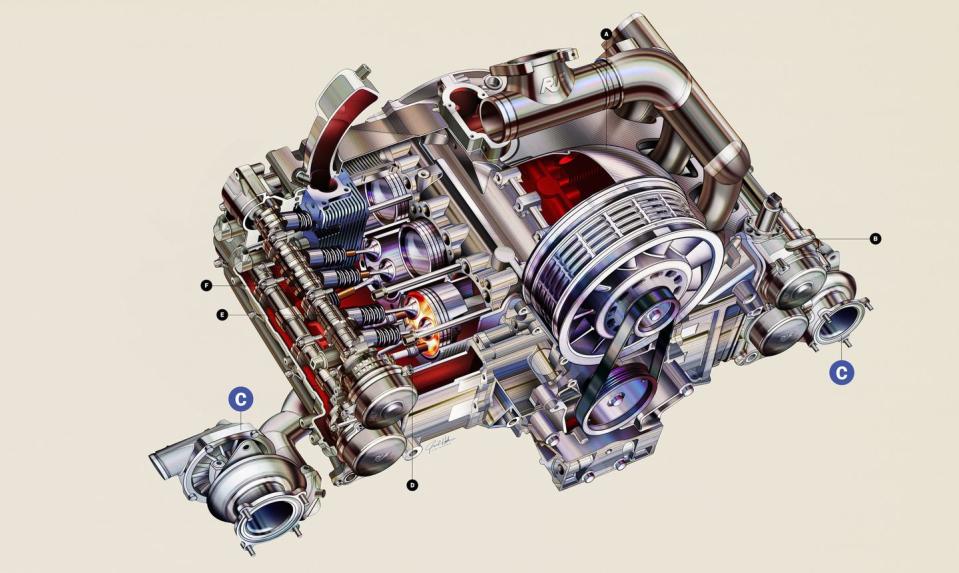
Ruf Jr. loves a naturally aspirated engine, but turbos define the Ruf brand. The Tribute gets twin turbos to reach 543 hp, roughly 100 more than Porsche ever managed with its roadgoing air-cooled flat-sixes.
D

Despite being produced in low volumes, Ruf cars meet emissions standards in every market where they’re sold. Using two spark plugs per cylinder ensures a cleaner burn.
E
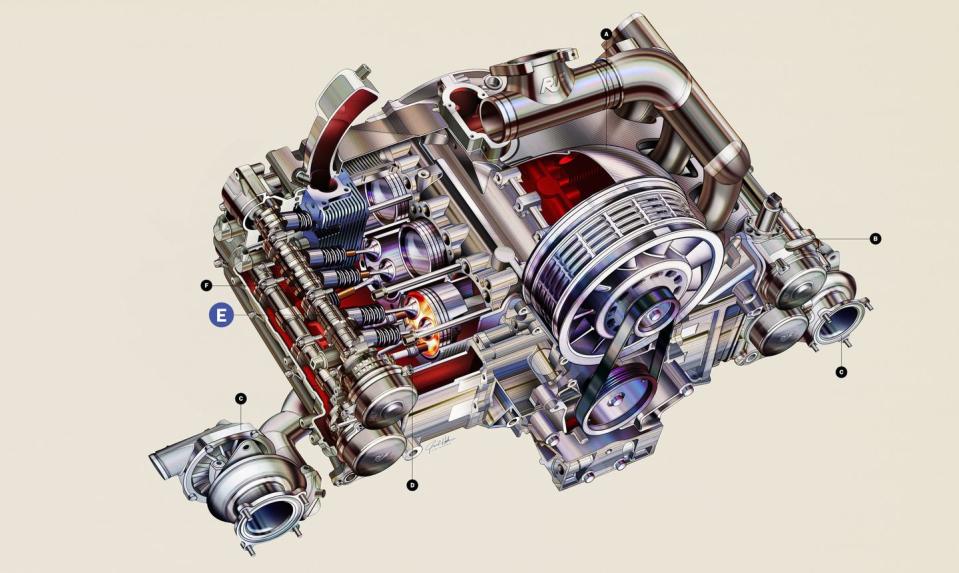
For this engine, Ruf built cylinder heads with two intake valves and one exhaust valve per cylinder. Ruf Jr. explains that a four-valve air-cooled engine is “problematic” because it’s difficult to manage temperatures in the tighter areas of the head, especially between valve seats. As the exhaust is at the bottom of the flat-six, the air from the fan is hotter still by the time it gets down to the valves. Three-valve heads are, Ruf Jr. says, the best compromise between performance and durability.
F
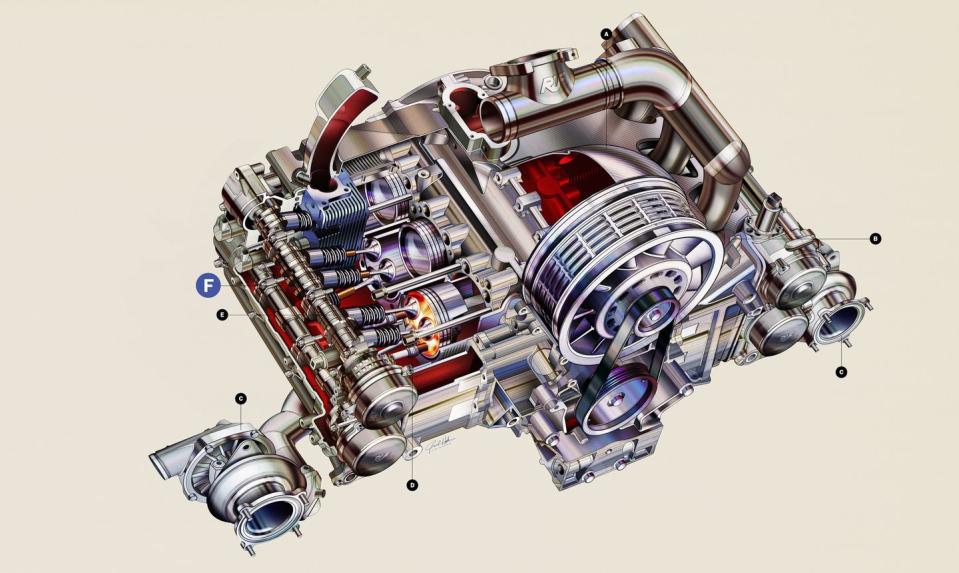
Unlike Porsche’s air-cooled 911 engines, Ruf’s Tribute mill uses twin-cam heads. (The 959’s engine was derived from the 911 unit but featured water-cooled four-valve heads.) Additionally, there’s variable timing on both the intake and the exhaust to reduce emissions and variable lift on the intake to boost high-rpm performance. Note the two cam profiles per intake valve.

A car-lover’s community for ultimate access & unrivaled experiences.JOIN NOW Hearst Owned
You Might Also Like

 Yahoo Autos
Yahoo Autos 